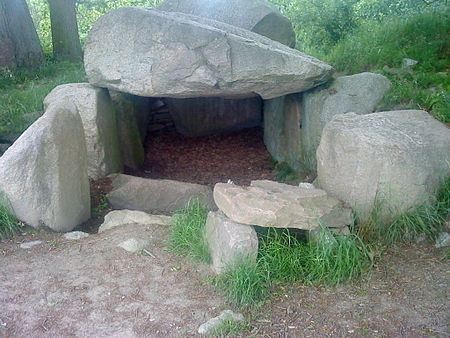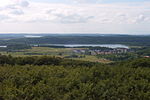Lancken-Granitz dolmens

The Lancken-Granitz dolmens are a group of seven megalith tombs in the Lancken-Granitz municipality on Rügen, northern Germany. Erected during the middle Neolithic, when they were used by the Funnelbeaker culture, at least some were in use until the early Bronze Age. Three of them are encircled by solitary rocks forming either rectangles or a stone circle, one has a solitary "guardian stone" on its eastern side. The dolmens were constructed from glacial erratic boulders and red sandstone. In part subdivided into up to four compartments as common for the region, one dolmen showed a subdivision into six such compartments, which is an unusually high number. When the tombs were archaeologically assessed in 1969, Stone and Bronze Age funerary goods were retrieved, including flint hatches, stone axes, amber pearls, bronze needles and necklaces as well as an abundance of arrowheads and pottery.
Excerpt from the Wikipedia article Lancken-Granitz dolmens (License: CC BY-SA 3.0, Authors, Images).Lancken-Granitz dolmens
B 196, Mönchgut-Granitz
Geographical coordinates (GPS) Address Website External links Nearby Places Show on map
Geographical coordinates (GPS)
| Latitude | Longitude |
|---|---|
| N 54.36286 ° | E 13.61901 ° |
Address
Großsteingrab Lancken-Granitz 2
B 196
18586 Mönchgut-Granitz
Mecklenburg-Vorpommern, Germany
Open on Google Maps










